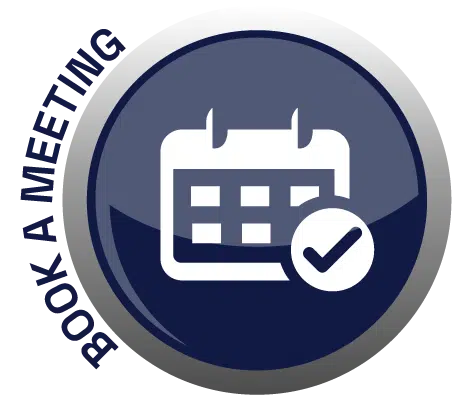So, you’re considering creating a website and wondering about the stages involved? Well, understanding the five key phases of website development is crucial for a successful online presence. From planning to launch, each stage brings its own set of challenges and opportunities. Let’s dive into this structured process to uncover the intricacies of transforming an idea into a fully functional and visually appealing website that resonates with your audience. Ready to explore the journey of website development? Let’s discuss further: What Are the 5 Stages of Website Development?
Key Takeaways
- Planning: Define project scope, goals, and target audience.
- Design: Focus on color schemes, graphics, and user experience.
- Development: Translate design into a functional website.
- Testing: Ensure seamless user experience and functionality.
- Launch: Finalize testing and optimization before going live.
Planning
When embarking on a website development project, thorough planning is essential to ensure the success of the endeavor. Planning involves a strategic approach to outline the project scope, goals, and requirements. Start by clearly defining the purpose of your website and identifying the main objectives you aim to achieve.
Conduct in-depth research to understand your target audience and their preferences to attract and engage visitors effectively. Gathering pre-development data helps in mapping out the project details and prevents unexpected issues that may arise later on.
Different types of websites require specific functionalities and technologies, so it’s crucial to have a detailed plan in place. This planning stage sets the foundation for the entire web development process and ensures that resources are allocated efficiently.
Design
During the design phase of website development, you’ll focus on discussing color schemes, function, special features, graphics, and videos to bring your vision to life in 2D. This stage is crucial as it sets the foundation for the overall look and feel of your website. It’s important to bring examples of websites you love to the meeting with your creative team, as this will help them understand your preferences and style.
Collaboration between you and the creative team is key during this phase to ensure that the design aligns with your goals and resonates with your target audience. Providing feedback and being open to changes will help refine the design to perfection.
Development
Embarking on the development phase of website creation involves translating the approved design into a functional and interactive online platform. This stage is where the magic happens; the website starts taking shape, and functionality comes to life. It’s crucial to collaborate closely with copywriters, graphic designers, and other team members to ensure a seamless integration of voice, content, and graphics.
In this phase, attention to detail is key. Frontend and backend development work hand in hand to bring the design to reality. From coding to implementing special features, every step is carefully executed to guarantee a smooth user experience.
The development phase is the longest but most pivotal stage of the entire process, demanding meticulous problem-solving skills and logical thinking.
Testing
As you progress to the testing phase of website development, meticulous attention to detail and logical thinking become paramount in ensuring a seamless user experience. Testing is the stage where the functionality and usability of your website are put to the ultimate test.
Here are some key aspects to focus on during this critical phase:
- Conduct thorough testing of all links, forms, and scripts.
- Utilize code validators to ensure adherence to web standards.
- Upload the site to a server using FTP software.
- Perform a final post-deployment test to verify correct installation.
Launch
With the website development process nearing completion, the pivotal moment of launching your website is a critical step towards establishing your online presence and reaching your target audience effectively.
As you prepare for the launch, ensure that all elements of your website, from design to functionality, are thoroughly tested and optimized for a seamless user experience. Double-check every link, form, and script, and run spell-checking software to catch any errors that might detract from your site’s professionalism.
Utilize code validators to guarantee adherence to web standards and upload your site to the server using FTP software for a smooth deployment process. After deployment, conduct a final test to verify correct installation before making your site live.
Frequently Asked Questions
How Can I Optimize My Website for Search Engines?
To optimize your website for search engines, focus on keyword research, meta tags, quality content, mobile responsiveness, and site speed. Regularly update content and monitor analytics for performance. Engage with your audience to improve user experience.
What Are the Best Practices for Mobile Responsiveness?
To optimize your website for mobile responsiveness, focus on responsive design, fast loading times, and intuitive navigation. Prioritize user experience on various devices. Test across different platforms to ensure seamless functionality. Consistency is key.
Is It Important to Consider Accessibility for All Users?
Considering accessibility for all users is crucial in web development. Ensure features like alt text for images, keyboard navigation, and color contrast meet accessibility standards. Prioritize inclusivity to provide a seamless experience for everyone accessing your website.
How Do I Ensure My Website Is Secure From Cyber Threats?
To ensure your website is secure from cyber threats, implement SSL certificates, update software regularly, use strong passwords, conduct security audits, and backup data. Stay vigilant against phishing attacks and educate yourself on evolving threats.
What Strategies Can I Use to Drive Traffic to My Website?
To drive traffic to your website, focus on SEO optimization, engaging content, social media promotion, email marketing, and collaborations. Utilize analytics to track performance and adjust strategies. Consistent efforts will attract and retain visitors.
Conclusion
Now that you have a clear understanding of the five stages of website development – planning, design, development, testing, and launch – you’re well-equipped to tackle your next website project with confidence.
By following these steps carefully and ensuring attention to detail at each stage, you can create a successful website that meets your goals and requirements.
Remember to stay organized, communicate effectively with your team, and test rigorously before launching your website to ensure a seamless user experience.







Add Comment